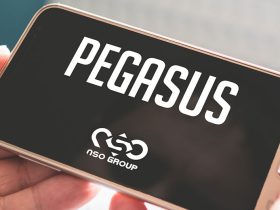Certainly one of Linux’s best and most distinguishing traits is its adaptability. Examine the way it began and the way it’s going, and also you’ll see what I imply.
Linux started its life as a humble experiment in Unix porting, however from there it shortly grew to become a preferred kernel for server OSes because of its low value (“free” is fairly low) and customizability. From there it morphed to energy community home equipment (assume routers) and Android, proving it was lean sufficient for an entire gamut of embedded techniques.
It’s simple to overlook that Linux’s proliferation to each class of computing machine has not concluded its evolution. With that in thoughts, I wish to take a second to not solely meet up with its modifications, however to doubtlessly get forward of them.
Don’t take this as gospel fact, although. That is simply me increasing on an instinct I had whereas finding out expertise traits. Plus, the start of the 12 months has me, like many individuals, in a prognosticatory temper.
The Penguin and The Man
As a Linux desktop consumer, I’m not at all times consciously conscious of this, nevertheless it’s true nonetheless: Massive tech firms are the strongest hand on the helm of the great ship Linux. It’s no accident that a number of the greatest tech gamers — together with Microsoft, Google, and Amazon — are among the many greatest Linux Basis donors.
This is sensible, since a few of these firms’ most worthwhile services and products are utterly depending on Linux to function. For instance, what would Android be with out Linux?
However that dependent standing works each methods — as a result of the Linux builders don’t cost for his or her onerous work, they want donation {dollars} to pay the payments after banging out kernel code all day. There’s an implicit incentive, then, for the Linux kernel devs to prioritize addressing the pursuits of their donors.
Slowly, this skews the Linux kernel within the path that enterprise wants dictate. This isn’t a price judgment, only a characterization of actuality; and within the grand scheme of issues, it’s actually a preferable actuality to 1 with out cash for Linux growth.
Linux Is Many Issues, IoT Will Be Most of Them
A couple of days in the past, it hit me that the way forward for Linux is the Web of Issues (IoT). To briefly outline this class of gadgets, IoT is a category of embedded headless gadgets designed to be Web-connected home equipment. Client tech followers will greatest know IoT as house gizmos like good assistant gadgets (e.g. Amazon Echo), house safety cameras, and the like.
Nevertheless, IoT gadgets are considerably extra prevalent within the non-public sector. When a single new manufacturing plant comes on-line, as an example, its proprietor may set up hundreds of network-connected sensors. These then blast all their knowledge again to firm HQ for large knowledge evaluation.
Whereas there are a number of explanation why I foresee IoT as the first sustainer of Linux growth, the principle one is that IoT is essentially the most diverse machine kind at present. Certain, there are many community home equipment and servers on the market. However with the plethora of IoT merchandise obtainable at present, there’s no contest anymore. As new networked devices emerge continuously, IoT exhibits no signal of slowing down. Briefly, this implies there will likely be a relentless stream of recent kernel modules that want writing.
There’s extra to IoT’s looming affect over Linux growth than the exploding variety of new gadgets, although. Simply as importantly, IoT is essentially the most sorely in want of safer growth. The safety of IoT gadgets on the entire has been abysmal for years, as I’ve lined up to now.
To recap, what tends to trigger issues is that, past customers seldom (if ever) logging in to them to examine logs and software program updates, IoT gadgets are sometimes made by firms with little software program growth expertise. Producers of conventional analog merchandise that at the moment are sprinting towards the IoT gold rush haven’t discovered the onerous classes of writing an working system that the veteran builders have. Fairly merely, IoT will garner most Linux builders’ consideration as a result of it is going to demand essentially the most work to get on par with Android telephones, Linux desktops, and Linux servers by way of safety.
However it’s not simply that IoT’s star is rising. The Linux constellation’s different stars are setting. This, I believe, will likely be most dramatic in Linux’s traditionally aggressive server displaying. Born as a pet challenge, Linux had a modest following till it caught the attention of for-profit firms due to its succesful server computing. To at the present time, an unlimited share of all servers run Linux.
To be extra particular, it’s not that Linux goes anyplace on the server, however it could quickly be past recognition. The brand new pattern of “serverless” computing, if it continues its sharp ascent, could ship Linux’s bare-metal server deployment share into decline. As cloud migration begins to sluggish, cloud service distributors like Amazon Internet Providers should compete extra aggressively with rivals. An rising tactic for doing so is by providing ever extra handy deployment choices, and serverless computing is among the many newest of those.
Server Distro Consolidation
In a serverless mannequin, the cloud vendor abstracts server deployment and upkeep away from the shopper, leaving solely the applying and database configuration for them to fret about. Why would you danger your server misconfiguration throwing a wrench into your plan when you may run disembodied utility code?
After all, serverless doesn’t actually make the server disappear. Somewhat, the Internet app creator simply doesn’t must take care of it. The cloud vendor continues to be putting in an OS for that app to run on, and for sheer customizability and value financial savings it most likely is Linux. Truly, it’s most likely doubly Linux: Linux on the uncooked {hardware} to run the hypervisor, and Linux in every of its digital machines. But when sufficient Internet startups go for serverless setups, and the cloud market stays concentrated in few sufficient palms, most server Linux will likely be chosen, configured, and deployed by a number of cloud suppliers.
This dramatically scales again Linux’s server range. Much less firms putting in servers means much less Linux server distros will thrive. Cloud distributors will choose the handful they like and go away the remaining. The top result’s fewer server distros with excessive set up bases.
So the place does that go away Linux’s different holdings? The Linux desktop, as vibrant of a group because it engenders, continues to be area of interest amongst desktop customers. Pc consumer inhabitants development could assist the Linux desktop accumulate devotees in absolute phrases, however as a share, we’re roughly the place we’ve at all times been. The place precisely I believe the Linux desktop goes is a subject for an additional day. For now, all I’ll say is that no proof I’ve seen means that “massively up in reputation” is it.
Embedded gadgets that aren’t IoT don’t look promising for Linux both. True, routers will at all times have to run one thing. However there’s a definite risk that Linux’s days because the main cellular participant are numbered. Now and again, Google’s Fuchsia challenge surfaces to publicize a brand new milestone earlier than quietly receding under the tech information floor.
Following the Penguin Tracks
It bears noting that, with as erratic and unexpected a journey as Linux has had so far, many a pontification has absolutely been mistaken earlier than. Will the dynamism of open supply proceed to propel it to new heights, or has it misplaced steam and gotten misplaced within the cloud?
Both approach, I’m curious to see the place our penguin buddy wanders to subsequent.
,







